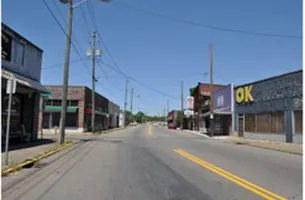State Mandated Barriers to Positive Educational Outcomes

“Burlington-the end of the line” the motormen would call as the streetcar would cross McCalla Avenue and loop around a set of commercial structures. Passengers who had boarded on Knoxville’s South Gay Street would disembark and make their way home or perhaps stop at one of the shops at the end of the line. In time, an entire retail district comparable in size to a small town would evolve along McCalla on both sides of the streetcar crossings. People continued to shop in Burlington long after the last streetcar had run.
Neatly organized and heated by a coal stove, one dry goods store, near where the streetcar tracks once crossed McCalla Avenue, was likely the last of its kind in East Tennessee. As I recall, the mom and pop business specialized mostly in shoes and socks. I liked doing business with them. The merchandise was of high quality and reasonably priced. However, “the pop” could be a mite overly persistent in closing a sale, once advising me that my feet would stretch out a pair of shoes that were too small.
Obviously, shoes should be fitted to the wearer-not the other way around. Educational programs should also be as fitted as precisely to the needs of individual pupils as resources will allow-an assertion diametrically opposed to our state mandated standardized test driven one-size-fits-all educational model. Currently misused to make comparisons between teachers, schools, and entire schools systems based on composite scores, standardized tests, which by definition have nothing to do with academic standards, produce a standard score based a norm. Our one-size-fits-all educational system is also being driven by the burden of additional credit hour requirements in math and science, for high school students, that crowd the curriculum. Like a canning jar, a curriculum has a limited capacity. Vocational programs that once graduated kids that were job ready have been condensed or eliminated. If a student fails an unnecessary math or science requirement, as is often the case, he has even less time for vocational classes, as the course must be repeated.
A young man who plowed for me last spring and helps with other jobs from time to time, is having to waste his mornings last summer retaking Algebra. He is an aspiring chef. When I sent him to buy some cushaw seeds for me, I told him to also buy anything that he would like to grow. He came back with all of the seeds needed for the ingredients to make salsa. His goal after high school is to volunteer for the military as a cook. After two years, the military will pay for his culinary arts training. Because not many military recruits request to work in food service the opportunity will most likely be available, but, first he must graduate from high school. With two years left, he could graduate from high school with the qualifications to enter the job market as a sous chef if a culinary arts program were available in the place of unnecessary math and science requirements.
An invalid measurement or a measurement that is applied incorrectly has no value at all. On the other hand, criterion referenced test tell us specifically what skills or concepts a child has not mastered and would be much more useful in planning for remediation. Aptitude testing helps us uncover a child’s interest and preferences. Both criterion testing and aptitude testing are being underutilized if they are being utilized at all in selecting and designing educational programs.
Similar to the proprietor who attempted to sell me a pair of shoes that did not fit, pupils are all being forced into the same pair of academic shoes regardless of how well they fit.
Motormen no longer call out “Burlington-the end of the line”, but high school graduation is the end of the educational rail line for many pupils ill prepared for life. Some don’t make it that far because of onerous requirements. The next stop may be the criminal justice system or the streets. If a child is repeatedly exposed to failure, can we reasonably expect him to act like anything other than a failure?
Writer’s Note: What is left of the Burlington retail district is centered along Martin Luther King Avenue, formerly McCalla Avenue, a few blocks east of Chilhowee Park. The split in the streetcar tracks remains visible beside Holston Drive near Save-A-Lot.
State Mandated Barriers to Positive Educational Outcomes
- Log in to post comments